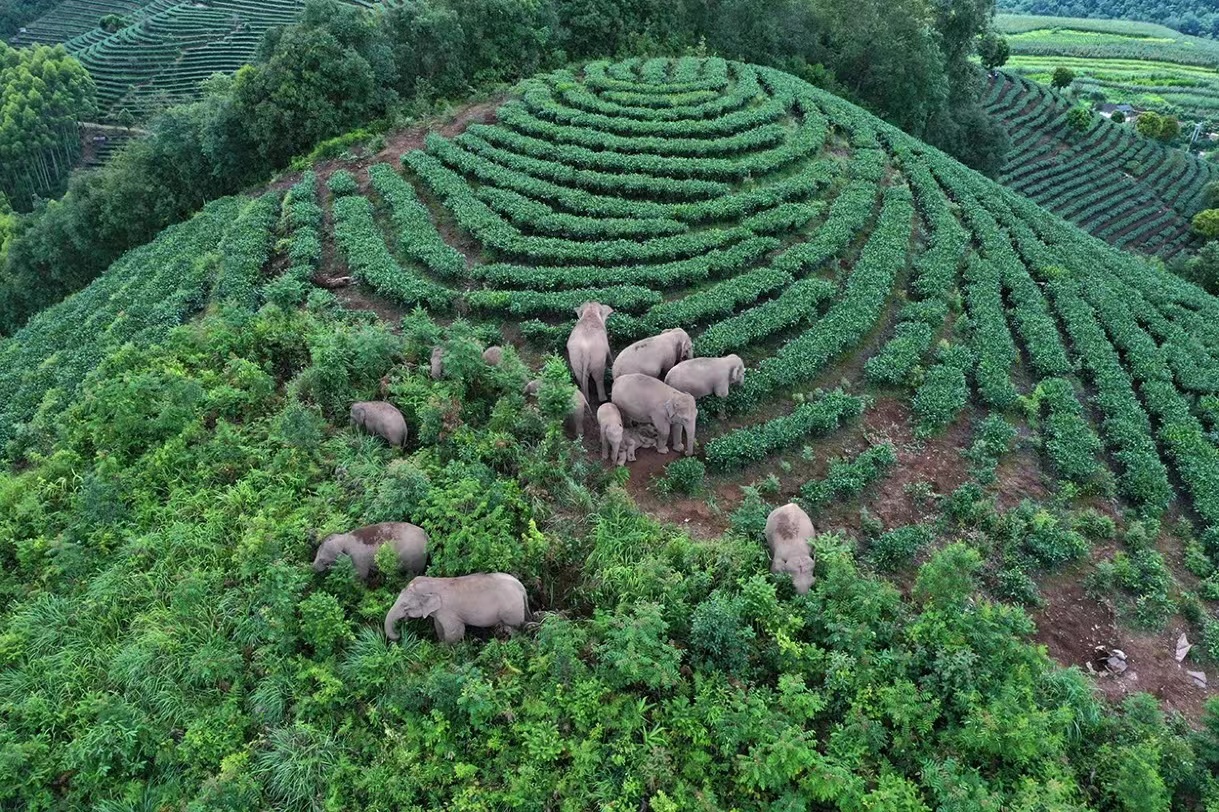Human–elephant conflict is the biggest threat for Asian elephants

A herd of Asian elephants wandered out of their nature reserve in southwestern China last year. Credit: Wang Zhengpeng/VCG via Getty
Asian elephants spend most of their time outside protected areas because they prefer the food they find there, an international team of scientists reports. But this behaviour is putting the animals and people in harm’s way, say researchers.
The finding has important implications for the long-term survival of the animals because protected areas are a cornerstone of global conservation strategies to protect threatened species, say researchers.
If protected areas do not contain animals’ preferred habitats, they will wander out, says Ahimsa Campos-Arceiz, who studies Asian elephants (Elephas maximus) at the Chinese Academy of Sciences’ Xishuangbanna Tropical Botanical Garden in Menglun, China. “It’s a good intention, but doesn’t always work out that way.”
Human–elephant conflict is the biggest threat for Asian elephants. Over the past few decades, animals in protected areas have increasingly wandered into villages. They often cause destruction, damaging crops and infrastructure and injuring and even killing people.
Wandering elephants
To understand how effective protected areas are for conserving Asian elephants, Campos-Arceiz and his colleagues set out to get a precise picture of Asian-elephant movements. They collared 102 individuals in Peninsular Malaysia and Borneo, recording 600,000 GPS locations over a decade. They found that most elephants spent most of their time in habitats outside the protected areas, at the forest edge and in areas of regrowth. The findings were published in the Journal of Applied Ecology1 on 18 October.
The researchers suspect that the elephants venture out because they like to eat grasses, bamboo, palms and fast-growing trees, which are common in disturbed forests and relatively scarce under the canopy of old-growth forests.
Philip Nyhus, a conservation biologist who specializes in human–wildlife conflict at Colby College in Waterville, Maine, says Asian elephants live deep in dense forest and so are much more difficult to study than African elephants, which roam open savannahs. “The sample size is impressive,” he says.
The finding is not unexpected given past anecdotal observations of elephant behaviour, says Nyhus. But now the data show that this is a common strategy for the survival of these animals, and not just something seen in a subset of the population. The research provides strong evidence for how to set up suitable protected areas that reduce the risk of elephants wandering out, he says.
‘There will be conflict’
The results do not diminish the importance of protected areas, which provide long-term safety for the animals, says Campos-Arceiz, who did the field work while at the University of Nottingham Malaysia in Selangor. “But they are clearly not enough.”
The study suggests that “there will be conflict between humans and elephants”, says Guo Xianming, director of the Research Institute of Xishuangbanna National Nature Reserve in Jinghong.
Asian elephants wander into villages owing to a combination of reasons: an increase in elephant populations, forests in many reserves have grown denser and have become unsuitable for the animals, and increasing habitat loss and degradation outside.
Last year, two herds of elephants made global headlines as they wandered out of the Xishuangbanna National Nature Reserve and travelled for hundreds of kilometers, wreaking havoc along the way. One herd spent five weeks at the botanical garden where Campos-Arceiz works. “It was intense,” he says.
There is an urgent need to understand how people and elephants can better share the landscape, says Guo. And the first step is by better protecting people’s lives and livelihoods. “It’s the only way of peaceful co-existence.”
doi: https://doi.org/10.1038/d41586-022-03318-y
URL: https://www.nature.com/articles/d41586-022-03318-y

